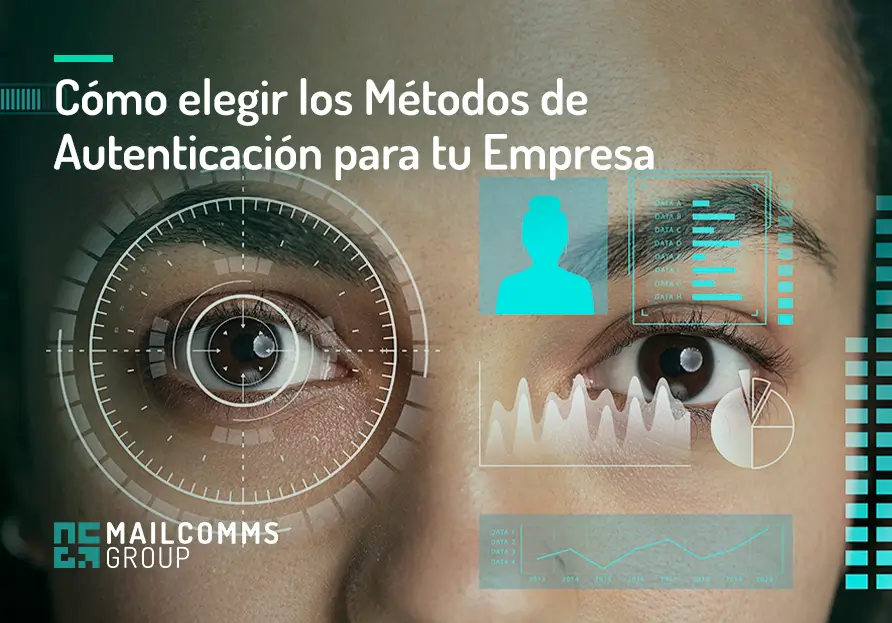Protecting the identity of users and the integrity of their personal data is essential for any company.
In this regard, the use of authentication methods is one of the main barriers to prevent any unauthorized access to this information. However, given the large number of options available, choosing the most appropriate method for your business can be complex.
On this occasion, we will give you some keys so that you know which of all the verification methods is the one that best suits the needs of your company and how to protect the digital identity of your users.
What are authentication methods?
Authentication methods are processes to verify a user’s identity before accessing a system or confidential information or, for example, to complete digital onboarding processes with guarantees. These methods can vary: from the use of simple passwords to advanced technologies such as biometric authentication or multifactor authentication.
The purpose of these controls is simple, but crucial: to ensure that the person trying to gain access is who they say they are, reducing the risks of identity theft or unauthorized access.
Types of user authentication methods
In order to make a choice, it is essential that you know the main methods of user authentication currently used in the business world:
Password-based authentication
The user enters a password or PIN to access the system. Effectiveness depends on the complexity of the password and the security policies implemented, such as frequent changes.
Public and private key authentication
The user accesses the systems using his private key, while the public key, which is shared, verifies it. This type of verification is common in electronic signature authentication systems balanced between security and ease of use.

Biometric authentication
It uses the user’s physical or behavioral characteristics to verify his or her identity (fingerprint, facial or iris recognition, retina scan and voice recognition).
Biometrics are highly secure information security authentication methods that are difficult to forge, which is why they are being adopted in many sectors. One example is the electronic signature in the insurance sector.
Token
A token is a physical or digital device that generates a temporary access code that usually changes every few seconds. It is used in conjunction with a password for more secure authentication.
Digital certificate
It is an electronic file used to authenticate the identity of a user. It is increasingly used in more and more business and governmental procedures, so it is important to have it at hand and to know how to recover your electronic signature certificate in case you have lost it. In this article we tell you more about the types of digital certificates that exist and which one to choose in each case.
Two-factor authentication (2FA) and multi-factor authentication (MFA)
2FA combines something you know (password or PIN), with something you have (mobile phone). MFA is similar to 2FA, but includes more verification methods, such as fingerprint.
Symmetric key authentication
It involves the use of a single key shared between server and user. It is faster than public and private key authentication, but requires careful key management to avoid compromising security.
Authentication methods in computer security: strategies and techniques.
In the field of computer security, user identity authentication methods are the first line of defense to protect sensitive data and systems.
There are single-factor, two-factor and multi-factor methods, and implementing a combination of methods will undoubtedly ensure the most robust level of security.
Importance of multifactor authentication in the protection of sensitive data
Multi-factor authentication (MFA) is an approach that combines more than 2 forms of verification before allowing access. For example, an MFA system may include all factors of 2FA authentication, plus a biometric authentication method. This provides additional protection against password theft or impersonation.
How to select the right authentication methods for your company
The most appropriate authentication method for each company will depend on the type of business, the level of security required and the technologies already in place, among other factors.
At MailComms Group we have a identity verification system based on biometric authentication, which guarantees user authenticity, minimizing the risk of fraud, identity theft and security breaches in digital transactions and services. In addition, it is easily integrated into your digital onboarding process, offering a seamless experience.
Factors to consider when choosing verification methods for your business
Among the issues to consider when choosing between user authentication methods are:
- The level of security required. Businesses that handle highly sensitive information, such as financial data, should choose more robust methods.
- Cost and scalability. Small businesses may opt for more affordable verification methods, while large corporations will need scalable solutions that can handle large volumes of users.
- User experience. The balance between security and ease of use is important.
User authentication methods for different types of companies and industries
 Authentication methods for IT security must be adapted to the nature of the business:
Authentication methods for IT security must be adapted to the nature of the business:
- In the financial sector, authentication with tokens and digital certificates is widely used. Also remember that when incorporating remote clients in the financial sector, you will have to carry out the mandatory KYC process beforehand.
- For the healthcare sector, biometric authentication, such as facial or fingerprint authentication, is popular due to its level of security.
- Small and medium-sized enterprises can opt for secure passwords combined with 2FA authentication to reduce risk without incurring high costs.
Do you want to know more about what is the KYC process and what is an electronic certificate for a company?
Implementing authentication methods to protect your business
Once the appropriate authentication methods have been selected, it is crucial to ensure that their implementation is effective.
How to integrate user authentication methods into your existing systems
Integrating these methods into existing systems requires some technical expertise, so it is advisable to work with vendors that offer solutions that are compatible with existing business infrastructures and that allow for easy upgrades as new needs arise.
At MailComms Group we guarantee the integration of our method of user authentication securely and tailored to the requirements of each business.
We design both single-factor and multi-factor authentication processes, adjusting them according to the importance of the required access. In doing so, we create an authentication flow that ensures a balance between security and an easy user experience.
